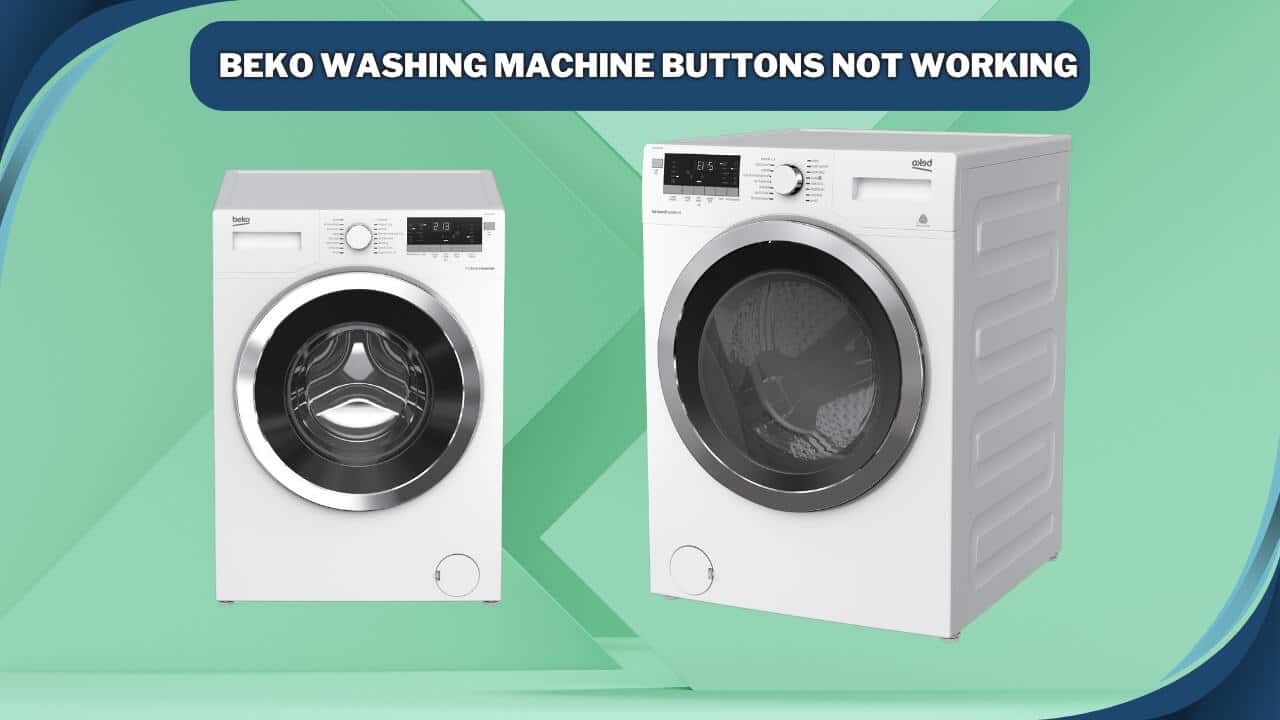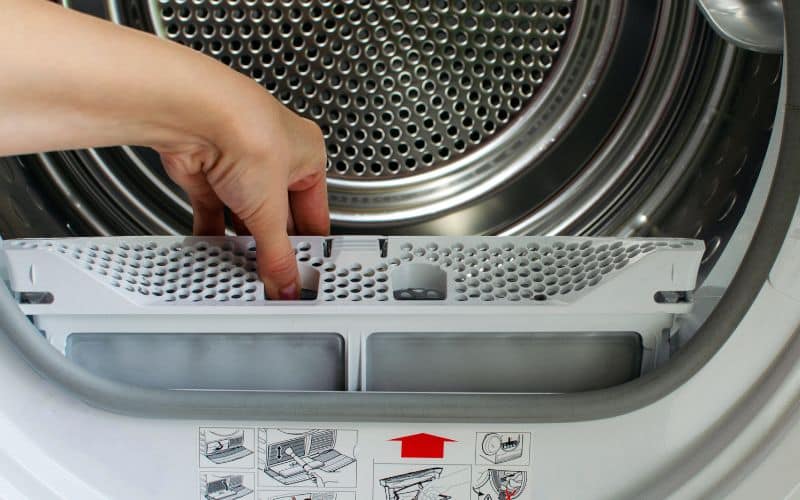We can all agree that washing machines are literal lifesavers. They make life easy for us and help to save time.
However, sometimes it can feel like these “time savers” take forever to do their job. It can be so frustrating if the machine is new or just replaced.
Sometimes, you cannot help but ask just how long a washing cycle takes.
A washing machine cycle can typically last as long as 15 minutes to two hours or more. However, this time variation depends on many factors. One of such factors is whether the washer is a front loader or a top loader. Other factors include the type of clothes you are washing, washer settings, and the load size in the cycle.
How Long Does a Washer Take to Wash Clothes?

A washer takes about fifteen minutes to two hours to wash clothes entirely. The difference in time depends on several factors; these factors include:
#1. The Type of Washer
Different manufacturing brands have different automated times for different settings.
However, even among these different brands, washers are divided into two groups which are front-loading and top-loading machines.
Apart from their aesthetics, one other difference is their washing time. Top-loading washers take an average of 60 – 80 minutes per regular wash cycle.
While front-loading washers take about 75 minutes to 2 hours on average. Below are other differences between these washers.
| Front-Loading Washers | Top-Loading Washers |
|---|---|
| Are more energy efficient | Have faster-washing cycles |
| Use less water in washing | Are cheaper to purchase |
| Clean clothes better and causes less wear | Are easier to clean and maintain |
| Are easier to install or stack | Are more convenient to use |
#2. The Type of Fabric
Delicate fabrics take less time to wash than bulkier clothes like towels, blankets, or jeans.
Fabrics like wools take about 30 – 45 minutes to wash well. Generally, the more fragile the clothes are, the more time the washer allocates them. The reason is to preserve the fabric while preventing wear or tear.
It is best practice to wash clothes with similar fabrics together for effectiveness. This practice means you should group your clothes according to type to quicken the washing process.
Doing this helps to balance the cycle load and helps to preserve the longevity of your clothes.
Another determinant is the color of the fabric. If you pay attention to machines with white clothing settings, you will notice one thing. The cycle for whites takes longer compared to regular wash settings.
#3. Size of Load and Amount of Water in Wash Cycle
The washing machine will take longer to wash a large load of clothes than a small-sized load.
It is faster and easier for the washer to whirl or tumble fewer clothes than a total load capacity.
Also, it is in the design of most new-age washing machines to use as little water as possible. The reason behind this is water conservation.
For this reason, these machines (which are usually front loaders) take a longer time to complete a wash cycle. One benefit of this design is that the clothes come clean and stain-free.
#4. Washer Settings
Most washing machines these days have different settings and controls. These settings are usually different for materials like delicates, cotton, jeans, heavy clothing, etc. One of the fastest settings is the Quick Wash cycle.
This quick wash setting can take between 10 -15 minutes. However, they are only suitable for small loads and clothes with slight stains.
Therefore, it is not advisable to use this setting often as it can make your clothes wear out quickly.
Different reasons why washing would take long are:
- User error.
- Unbalanced load cycles.
- Use of wrong washing cycles.
- Use of excess detergent.
Some technical reasons include faulty washer parts, faulty control panels, or low electricity voltage.
How Long Does a Washer Take to Drain and Spin?
Draining and spinning in a washing machine can take 15 – 30 minutes for both operations.
This variation depends on the machine brand, cycle load size, and machine type. That is, if it is a front loading or top loading machine.
The machine brand plays a significant role in determining the time required for spinning clothes after washing.
However, on average, front-loading machines spin faster than top-loading machines with similar loads.
You should know that the ‘drain and spin’ operation differs from ‘rinse and spin.’ Drain-and-spin removes all excess water from your washed clothes and spins them until they are almost dry.
Rinse-and-spin, on the hand, is mainly used to remove excess detergent from your clothes. This latter operation gives your clothes another wash and can last for as long as 45 minutes.
Rinse and spin time can be increased or decreased depending on the washer manufacturer and the temperature of water you use.
For example, hot water takes less time, while cold water takes more time.
You should bear in mind that draining and spinning do not dry your clothes. It simply reduces the time the clothes would have spent in the dryer.
The mechanism is to sin the clothes at a breakneck pace till the clothes are just damp to touch instead of dripping wet.
How Long Does a Whirlpool Washer take?
For a regular wash cycle, whirlpool washers take about 50 to 60 minutes to complete a wash cycle.
However, this time can increase or decrease depending on the size of the clothes load and the washer settings chosen.
Below is a table showing different whirlpool cycles and the average time they take:
| Wash Cycle | Average Time |
|---|---|
| Normal cycle | 50 – 60 minutes |
| Quick wash cycle | 15 – 40 minutes |
| Heavy duty cycle | 60 – 135 minutes |
| Delicate cycle | 45 – 80 minutes |
| Sanitize cycle | 90 – 110 minutes |
New age Whirlpool machines come with a detailed instruction manual or a chart that shows the different wash cycle times. You can easily refer to this manual for clarity and certainty.
How Long Does a Whirlpool Washer Take to Sense?
For a whirlpool washer, sensing takes about two to three minutes. Sensing is a spinning operation the washing machine does to ascertain the size of the cycle load.
The spinning occurs after you have pushed the start button and locked the lid. After the sensing, water starts to flow into the washer.
The cycle is slow, allowing the water to soak up the clothes properly. This process continues until the load receives the appropriate quantity of water.
If your Whirlpool washer takes more than three or four minutes to sense, there is a problem.
These problems could be faulty water inlet valve, drive motor, or shift actuator. It could even mean that the control board is faulty.
The water inlet valve determines how much water can enter the washer and is controlled electrically by the control board.
The drive motor helps to generate enough power to spin the machine drum around. A shift actuator is the part of the machine that gives a signal to initiate the following processes.
The control board, as the name implies, controls everything about the washer.
Knowing the functions of these parts, you can see how any of them going bad can impair washer sensing.
Although, it can be hard to pinpoint the exact cause of the problem, especially if you are not a professional.
It is better to call for the services of experts to avoid complicating the problem. They will help to diagnose the faults and give you the best possible solution.
How Long Does a Washer Take to Fill?
Depending on the type and brand of machine, it takes about 10-15 minutes for a washer to fill.
The most common problem with water filling machines is when it is slow or when the water comes in trickles.
There are about four reasons why the washing machine fills up slowly. These reasons include:
- Twisted water hoses reduce the flow and pressure of water inflow.
- Clogged or faulty water inlet valves.
- Closed water faucet valve, which prevents the machine from accessing water.
- Faulty wiring, especially around the water inlet valve.
You can inspect the first three problems and rectify them with ease. Most times, inlet valves cannot be repaired and must be replaced when faulty.
You can also install filters into the water faucet and inlet valves to prevent clogging. However, if these problems persist, you need to call a professional to check your washer.
Conclusion
Most washing machines have a display screen that tells you how long a wash cycle will take.
While always using quick wash settings may be tempting, you should consider using longer cycles.
Extended run time is better at removing sweat and similar stubborn stains. This washing machine cycles are also less damaging to clothes.





